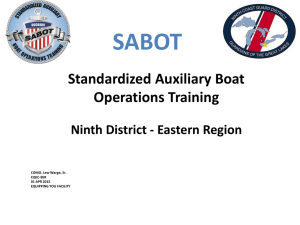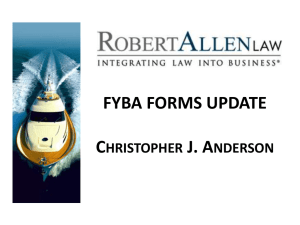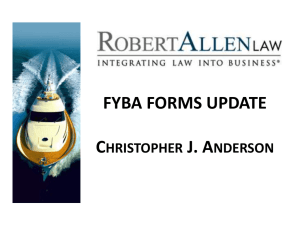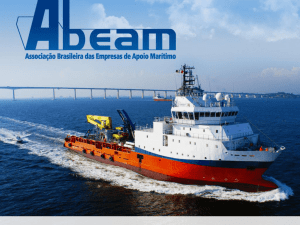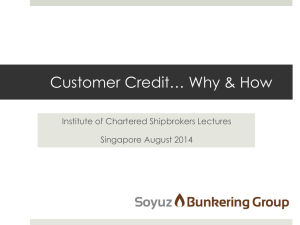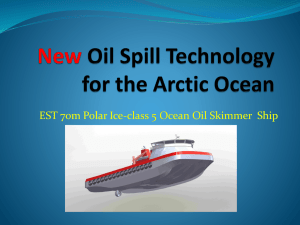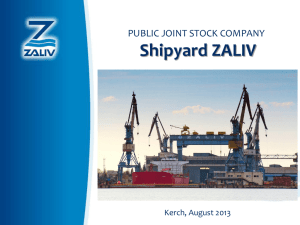powerpoint file
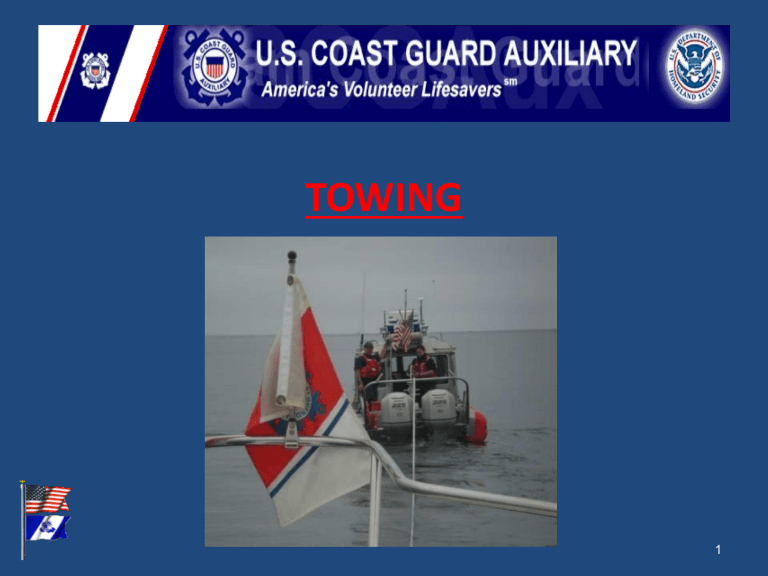
TOWING
1
As a boat crew member, towing will be one of the missions executed for many types of marine craft.
Boat crews need a firm grasp of towing principles to ensure that an evolution does not result in injury, death, or further damage to property.
Towing is never “routine”
2
The tow should always be within the crew’s and vessel’s capabilities!
3
Do not let a perceived need to engage in a towing mission override a complete, honest risk assessment process that emphasizes personal safety.
4
Boat crews must understand the forces, or types of resistance, which act on the towed vessel and how to handle the resistance safely.
The towing vessel must provide the means to move the towed vessel.
5
Overcoming the effects of static forces
1. Apply the towing force on the initial heading gradually
2. As the towed vessel gains momentum, slowly and gradually increase speed
3. To change the tow direction, make any change slowly and gradually after the towed vessel is moving
6
Changing Heading
1. Apply the towing force perpendicular to the vessel’s heading. Once the towed vessel starts to turn, resistance will develop
2. Apply turning force slowly and gradually
3. Begin to tow in the desired direction
4. Once making way, the effects of static forces lessen
5. Until the tow achieves a steady speed and direction, apply power or turning force to defeat any remaining inertia or to change the towed vessel’s momentum gradually
7
Combination of Forces &
Shock-Load
• During towing, a boat crew rarely deals with only one force.
• Some forces are very large and relatively constant
– Usually dealt with safely
• When forces are changing irregularly, tension on the tow rig varies.
8
Shock-Loading Prevention or
Counteraction
• Reduce towing speed
• Get the vessels “In-Step”
9
Vessels “In-Step”
10
Shock-Loading
Prevention or
Counteraction
• Lengthen the tow line
11
Shock-Loading
Prevention or
Counteraction
• Set a course to lessen the effect of the seas
• Deploy a drogue from the towed vessel
• Constantly adjust speed
12
Towing Equipment
• Towlines
• Pendants and bridle
• Deck fittings
• Hardware for attaching the towline (skiff hooks, shackles, etc.)
• Fenders
• Drogues
• Alongside lines
13
Bridle Rig
14
Inspect towlines, pendants, and bridles after each tow and whenever shock loading has occurred.
15
Messenger / Heaving Line
• A length of light line used to carry a larger line or hawser between vessels
• Made of light, flexible line with either a soft rubber ball or monkey’s fist at the throwing end
• Should be in good condition and at least
75 ft long
16
Messenger / Heaving Line
• The bitter end of the heaving line is attached to the towline with a clove hitch, bowline, or snap hook
• Long heaves are cast downwind if possible
• Throw should be targeted above the center of the vessel so it crosses over the deck and avoids breaking glass or injuring people
17
Messenger / Heaving Line
18
The amount of effort put into preparation ahead of time will pay off with safer, easier execution of the tow.
Throughout the entire towing evolution, open communication between the coxswain and crew and towed vessel is absolutely necessary for safety.
19
Receiving Notification and Accepting
Task
1. Get as much critical information as possible
2. Write down the information
3. Develop a full understanding of the situation
4. Make a conscious decision to “accept” the tasking
The coxswain is ultimately responsible for mission execution.
20
Briefing the Crew
1. Conduct a thorough boat crew briefing
2. Explain the situation and what might be expected, using the facts
3. If there is any confusion or uncertainty, clear it immediately
4. The crew must participate and ask relevant questions
5. Assign personnel to assist with preparations
6. Ensure proper safety and personnel protective equipment is donned by the crew
21
Evaluating Conditions
1. Note how the different environmental conditions will affect the operation
2. As conditions may change during the mission, estimate which phase of the mission will encounter what conditions o Will on-scene conditions be different from those en route
3. Keep a record of present and forecast conditions
& update as necessary o Existing and forecast marine weather o Currents and tides o Daylight/Darkness (sunrise/sunset, twilight)
22
Operating and Navigating the Vessel
Safely
The only way to perform a tow is to get there safely!
1. Maintain safe speed for the conditions
2. Keep constant awareness of navigational position and navigational hazards
3. Stay aware of the distressed vessel’s position
23
Communicating with the Distressed
Vessel
Contact should be made with the distressed vessel if possible
1. Provide the distressed vessel with ETA
2. Advise persons on the distressed vessel to put on life jackets
3. Get details of deck layout, fittings, and backing plates
4. Ask for information the distressed vessel’s crew thinks is important before arriving on scene (lines in the water, nearby vessels, etc)
24
Communicating with the Distressed
Vessel (con’t.)
5. Determine if anything has changed since distressed vessel’s initial contact
6. Ascertain any sense of heightened urgency
7. Inform the distressed vessel that once on scene, conditions will be observed and final preparations made
8. Establish and maintain a communications schedule
25
Performing an On-Scene Assessment
1. Watch the vessel’s movement (pitch, roll, drift, effect of wind, etc). Compare it to own vessel.
2. Evaluate the location and condition of deck fittings
3. Confirm number of P.O.B.
4. Note any unusual conditions that may affect towing procedures (loose gear, rigging, debris in the water, etc.)
26
Performing an On-Scene Assessment
(con’t.)
5.
Communicate any concerns to the distressed vessel
6.
Decide whether to put a crew member on the distressed vessel
7.
Decide if it is best to remove crew from the distressed vessel
8.
Determine if an equipment transfer (drogue, pump, radio) will be necessary
9.
After evaluating and making risk assessments, determine whether to tow or not
27
Making-Up the Tow Rig &
Preparing for Transfer
1. Set up the tow vessel deck with all equipment staged and ready
2. Attach two heaving lines (one primary, one backup) to the tow rig
3. Assign crewmembers to each heaving line, and bitt or line handler duties
Note: Avoid using lines provided by the distressed vessel
28
Determining the Approach
The drift and aspect of the distressed vessel may determine the approach.
Once the best approach has determined, the coxswain will inform the crew:
• From which side to pass the tow rig
• When to pass the tow rig
• Whether to use a heaving line
29
Briefing the Distressed Vessel
1.
If transferring crew or equipment before the tow, relate when and how
2.
Explain plans and pass safety information
(enough so as to alleviate questions)
3.
Have ALL persons on board distressed vessel don life jackets
4.
Describe towing procedure
5.
Tell when and how tow rig will be passed
6.
Give tow rig connection instructions (where to attach)
30
Briefing the Distressed Vessel
(con’t)
6.
Inquire about type and condition of tow points
7.
Describe emergency breakaway procedures
8.
Describe emergency signals
9.
Instruct on general safety during approach and passing the tow rig
Limit the content of this briefing to “need to know” information. There will be ample time to pass additional information once the tow is underway.
31
Towing Astern
The most common towing technique is to tow the distressed vessel from astern of the rescue vessel.
The on-scene assessment gives the knowledge of how conditions affect both vessels.
32
Towing Astern
Knowledge of the towing vessel’s handling and maneuverability help assure a safe approach
Keep towline clear of propellers, shafts, and rudders
33
Establishing a Danger Zone
Before starting the approach, an imaginary danger zone is established around the distressed vessel.
The approach is made from outside the zone.
The size of the zone depends on conditions and the ‘arrangement’ of the distressed vessel
The poorer the conditions, the larger the zone
34
Establishing a Danger Zone
35
Maneuvering to an Optimum Position
The towing vessel should be maneuvered so that the crew can maximize use of the best deck work area for passing and working on the tow rig.
Procedure:
1. In calm conditions, make the approach at an angle that allows the crew the best angle to pass the tow rig
2. In rough conditions, make the approach into the prevailing wind and seas.
3. Make the approach at “bare steerage” speed
4. Once in the optimum position, station keep on the distressed vessel.
36
37
Maneuvering to an Optimum Position
(con’t.)
Procedure:
5. To station keep, the coxswain must simultaneously focus on the seas, the bitt and line handlers, and position with respect to the distressed vessel.
6. Maneuver and apply power early and smoothly as necessary
7. Maintain a safe distance
8. Use correcting maneuvers before a problem develops
38
Station Keeping
39
Passing the Tow Rig
Once optimum position is attained, the tow rig may be passed.
Procedure:
1. All lines, equipment, and connections should already be inspected and made ready
2. Minimize loose towline on deck by paying line out directly from the reel
3. If no reel, fake the towline carefully to prevent kinking or tangling
4. In heavy weather, use caution to ensure line is not washed overboard and into the screw
40
Passing the Tow Rig
Procedure:
1. Wet heaving line(s) to make them more flexible and minimize risk of tangling
2. Take 2/3 of the heaving line coil into the casting hand – leave remainder in other hand
3. Check that the target area is clear of people and obstructions
4. Advise the coxswain when ready
5. Coxswain directs cast
6. Call out “HEADS UP” as a warning to people onboard the distressed vessel
41
Casting the Tow Rig
Procedure:
1. Cast the heaving line so it falls across the distressed vessel’s deck
2. Inform coxswain when cast. Was it retrieved, fell short, or missed
3. Advise coxswain whenever a line is in the water
4. Advise coxswain once line is successfully retrieved on the distressed vessel
5. Coxswain will direct to send the rig; crew replies and begins transferring the rig
6. Keep coxswain advised of transfer progress
42
43
44
Connecting Tow Rig to Fittings
The attachment points for tow rigs must be sound!
Procedure:
1. Connect the eye to posts, bitts, or cleats so that it will not come loose under strain
2. Connect the bridle to fittings located at points that allow equal pull to be exerted
3. Center of bridle should be on centerline of vessel
4. Minimize the angle made where the bridle joins the towline by using fittings as far forward as possible
45
Inform persons on board re your connection requirements
COOL!
Oh … it goes OVER the cleat!
… and under the rail!
46
Connecting Tow Rig to a Trailer Eye
• On smaller, trailerable boats, the trailer eye is frequently the sturdiest fitting available to attach a tow rig.
• Attaching a towline to the trailer eye is a dangerous technique
• It requires the towing vessel to maneuver very close to a distressed boat and requires crewmembers to extend themselves over the side between the two vessels, or under the flared bow sections of a distressed boat.
47
To reduce risk in connecting the tow rig to the trailer eye, use a skiff hook
48
Attaching the Skiff Hook
Procedure:
1. Connect the skiff hook pendant to the towline
2. Slide the skiff hook into the boat hook handle
49
Attaching the Skiff Hook
3. While keeping the pendant taut, extend the boat hook and snap the skiff hook into the trailer eye
50
Transitioning to Stern Tow
Procedure:
1. Once towline is secured, persons on the towed vessel should clear the bow
2. Slowly move the towing vessel out of position and maneuvering zone
3. Give particular attention to the direction of the towline and amount of slack in the line
51
Transitioning to Stern Tow
(con’t.)
4. Coxswain instructs crewmember to take a working turn on the bitt. Use enough towline-to-bitt contact surface to ensure control of the towline
5. Pay out towline gradually
6. Slowly maneuver to a position in line with the towed vessel’s centerline
7. Always start the tow by pulling the disabled vessel ahead. Do not try to turn the vessel immediately.
52
Paying-Out the Tow Line
Paying-out the towline should be continued until amount of towline scope is satisfactory.
WARNING: Towlines always have “strain”. This increases risk of injury by catching hands, fingers, and arms between the bitt and the towline. USE EXTREME CAUTION!
53
Setting a Tow Watch
The towing watch has a critical responsibility. In addition to the crewmember assigned, it is a collateral duty for all other crewmembers. The condition of the vessel in tow and the towline must by constantly monitored.
54
Maintaining Side Tow
Watch
55
Briefing the Towed Vessel
Pass the following information:
General safety (life jackets, stay clear of tow rig, location of crew)
Equipment (pumps, drogues)
Steering of towed vessel
Route to take, expected weather and seas, destination, ETA
Lighting, sound signals
Communications (primary/secondary radio frequencies, times of status reports)
Emergencies (breakaways, signals)
56
Underway with Stern Tow
• The best course to safe haven is not always the shortest distance. A course that gives the best ride should be chosen.
• At times, vessels may have to tack to maintain the best ride
57
Maintaining a Catenary
• Once underway with a tow astern, a proper length of towline should be maintained.
Gravity causes a “dip” or downward sag
(known as catenary) to form in the middle.
This catenary acts as a natural shock absorber.
58
Staying in Step
The tow should be kept in step at a proper distance behind the towing vessel. When the towing vessel is on a wave crest, the towed vessel should also be on a wave crest several waves behind.
59
Towing at a Safe Speed
• A safe and comfortable towing speed maximizes towing efficiency.
• Damage, sinkings, and loss of life have occurred as a direct result of towing too fast.
60
Towing Alongside
When set up properly, an alongside tow allows two vessels to be maneuvered as one.
61
62
Determining Side of Tow and Approach
Procedure:
1. Determine on which side the tow will be rigged
2. Note the effect of the weather and physical conditions on both vessels
3. Decide whether it is better to have the wind to set the towed vessel down on the towing vessel, or vice-versa
4. Assess the other vessel’s drift rate and aspect to plan the speed and angle of approach
5. Communicate intentions to both crews
63
Determining Side of Tow and Approach
Normally the distressed vessel will be placed on the port side of the tow vessel.
Helmsperson has better view as helm is often on starboard side
Allows view of approaching “stand-on” vessels (Nav Rules)
Determination of side of tow is up to the Coxswain as all circumstances must be weighed.
64
Deciding Use of Towline
If the alongside tow occurs at the end of a stern tow, the coxswain should decide if the tow line will be disconnected from the stern tow, or hauled in while still connected and be used as a bow line for the alongside rig.
Benefit: If something happens, there is always a line attached to the disabled vessel
Caution: Use of a towline as a bow line puts more line lying on deck and may be a tripping or fouling hazard.
65
Determining the Hull Match
Hull match is determined by assessing how the two hulls will align alongside.
In towing alongside, the tow vessel may be angled, slightly bow-in to the towed vessel.
The towing vessels propeller(s) and rudder(s) should be aft of the towed vessel’s transom, rudder, or outdrive(s)
66
Rigging Fenders
All available fenders should be rigged, except one for handtending (a.k.a. ‘walking fender’) as the tow approaches, in potential contact points
67
Tow Vessel
Place fenders properly!!!
68
Note Fender
Adjusted Height
STAY
CLEAR!
69
Note Fender
Placement
70
Briefing Towed Vessel
Procedure:
1. Advise which side to prepare
2. If already in stern tow, describe shorteningup and whether towline will be used as bow line or whether (and when, “on signal”) to cast off
3. Describe approach and intended position alongside
4. Direct the towed vessel to clear as many obstructions from the side as possible
71
Briefing Towed Vessel
(con’t.)
Procedure:
5. Direct distressed vessel’s crew to place fenders at obvious areas
6. Designate attachment points
7. Direct crew how to assist.
72
Making the Approach
When making the approach, two alternatives are possible:
Use the towline as a bow line
Make free approach
73
Using Towline as Bow Line
Procedure:
1. Shorten tow with all headway off
2. When tow has stopped all forward motion, coxswain directs tow crew to
“break the bitt”. The towing vessel slowly backs and the towline is hauled in
3. Keep some space abeam until towed vessel is in the proper fore and aft position
74
Using Towline as Bow Line
(con’t.)
Procedure:
4. As the distance between the vessels decreases and as directed by the coxswain, the crew walks the towline forward to a suitable bow fitting, takes a working turn on the line and reduces slack
5. The coxswain then moors the towing vessel alongside the towed vessel
75
Using Towline as Bow Line
(con’t.)
Direct the towed vessel crew where to attach the lines
Perform all line handling at coxswain’s direction
Always pass the eye of alongside lines to a towed vessel
Keep the working end of the lines aboard the towing vessel to adjust or relocate if necessary
76
Making Free Approach
This approach is made as if mooring to a pier, but the first line passed will typically be the bow line.
The coxswain directs the crew to pass the bow line when alongside.
DO NOT fend off boat with your feet or hands!
77
Rigging Additional Lines Alongside
Calm Conditions:
• 1 st Line – Line 1: Rig a “bow line” between the two vessels’ bows
• 2 nd Line – Line 4: Rig a “stern line” between the two vessels’ sterns
• 3 rd Line – Line 2: Rig a “tow strap” from the towing vessel bow or forward mooring fitting to a point aft on the towed vessel
• 4 th Line – Line 3: Rig a “backing line” from a quarter location on the towing vessel to a location forward on the towed vessel
Note: Order of attachment of 2 nd Line and 3 rd Line may be reversed – Coxswain preference
78
Calm Conditions
Order of Connection
Black Line - #1
Blue Line - #4
Green Line - #2
Red Line - #3
Tow Vessel
#1 – Bow Line
#2 – Tow Strap
#3 – Backing Line
#4 – Stern Line
79
Rigging Additional Lines Alongside
Wind, Seas, or Current:
• 1 st Line – Line 1: Rig a “bow line” between the two vessels’ bows
• 2 nd Line – Line 2: Rig a “tow strap” so that, once secured, the towing vessel can put headway on and move clear of hazards
• 3 rd Line – Line 4: Rig a “stern line” between the two vessels’ sterns
• 4 th Line – Line 3: With headway still on, rig a “backing line”. This will be needed to slow the towed vessel.
Note: Order of attachment of 2 nd Line and 3 rd Line may be reversed – Coxswain preference
80
Wind, Seas, or Current
Order of Connection
Black Line - #1
Green Line - #2
Blue Line - #4
Red Line - #3
Tow Vessel
Make
Headway
#1 – Bow Line
#2 – Tow Strap
#3 – Backing Line
#4 – Stern Line
81
Maneuvering
Maneuvering with an alongside tow is a challenging boat handling technique.
To do it well and safely requires practice and experience.
An experienced coxswain will observe how winds, seas, and current affect the combined tow.
82
Approach for Mooring / Docking
Procedure:
1. Anticipate well ahead and decrease speed gradually
2. Place the larger vessel against the dock
3. Make approach into wind or current if possible
4. Moor on protected side (leeward) of a dock or pier
83
Approach for Mooring
(con’t.)
Procedure:
5.
Place a crewmember in a good position as a lookout aboard a towed vessel on approach
6.
Rig fenders and mooring lines from the tow if it is going to be placed against a dock or mooring
7.
The disabled vessel may use rudder control (if possible) to assist in safe docking or mooring
84
Towing is never “routine”
No two Coxswains nor two tows are ever alike.
With our non-standard boats, we cannot say
“this is what you have to do”.
Clear communication between Coxswain and crew is paramount at all times!
85
SLOW!!!!
The message woven throughout this presentation is that towing can be quite hazardous!
Boats Don’t Have Brakes!!!
Be Prepared … Be Careful!
86
Produced by
Wally Smith
District Captain - Response
THANK YOU!
87
